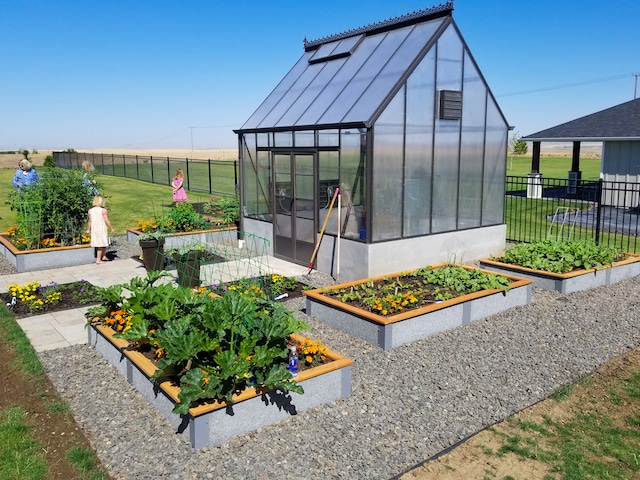All gardeners know that the soil they grow their plants in impacts the quality of their produce. A garden with no nutrients in the soil won’t grow good veggies, and those veggies won’t have the nutrients to pass on to the people who eat them. Likewise, good soil begins with the bed the soil is in. If a garden bed is made out of materials that leach harmful substances into the soil, those harmful substances are going to find their way into the food.
Camas elevadas no tóxicas
Raised beds are something that many gardeners want. Plants perform better in raised beds over planter boxes, because raised garden beds have no bottom. This allows plants to develop deeper roots. But not all raised beds are the same. If you’re concerned with growing organic food, don’t be tricked into building a toxic raised bed.
Wooden raised beds are ok. They’re a common choice among gardeners. If you want the frame to last, choose rot-resistant cedar, cypress, or redwood. But for truly non-toxic raised beds, avoid using any treated lumber such as railroad ties and utility poles. The creosote used to treat them may leach into the soil. Some gardeners are tempted to build cheap raised beds by stacking old tires or filling them with soil. Don’t do this! Tires contain toxic chemicals that gradually erode and break down, leaching those chemicals into the soil.
Un jardín de lecho elevado orgánico comienza con un suelo orgánico libre de toxinas. Para obtener productos verdaderamente orgánicos, saludables y limpios, compre brotes de plantas orgánicas y llene sus camas con tierra orgánica. Puede ser costoso llenar lechos de jardín elevados y profundos con tierra comercial, pero existen alternativas a la compra de tierra que funcionan igual de bien, si no mejor.
Muchos de los jardineros que han elegido usar Durable GreenBeds para su jardinería no tóxica usan el método de la gran cultura. Esto toma solo unos meses para comenzar, pero puede brindarle un suelo rico y un ambiente de cultivo más cálido en los años venideros. La idea básica es que tome cualquier madera caída que tenga alrededor de su propiedad o que pueda encontrar; cuanto más podrida, mejor. Cubra el fondo de sus camas con los trozos o troncos grandes y siga apilando restos de madera más pequeños y hojas en la parte superior y para llenar los huecos. Luego cubre esa pila con estiércol o compost. Cubres esa capa con tierra.
You’ve then drastically cut down on the amount of soil you have to buy. As the wood undergoes the natural process of decomposing, it creates rich soil and warmth in the bed.
Kits de camas elevadas no tóxicas fáciles
If you’re planning to grow root vegetables, experts recommend that your raised-bed vegetable garden be at least 12 to 18 inches deep. Not only does the depth create a better root zone for many plants, you can avoid bending over as much while gardening. Another benefit is that if the soil underneath your bed is contaminated, you can still enjoy non-toxic gardening because the plant’s roots won’t be in the contaminated soil.
Durable GreenBeds ofrece kits de camas elevadas fáciles que le brindan camas elevadas profundas y no tóxicas. Fabricamos nuestros propios juegos de camas elevadas en Oregón a partir de una mezcla de astillas de madera y cemento. Las astillas de madera se recogen de piezas de desecho y han sido sometidas a un proceso de mineralización, which neutralizes the sugars and proteins in wood so the wood can’t rot. Durable GreenBeds are completely non-toxic and it can take decades for them to decompose. You’ll get non-toxic raised beds that will last for 20-25+ years and will not rot, crack, peel, rust, or splinter. They come in a variety of tamaños listos para ensamblar, con tamaños personalizados disponibles también. Póngase en contacto con nosotros si desea tener una conversación al respecto.
